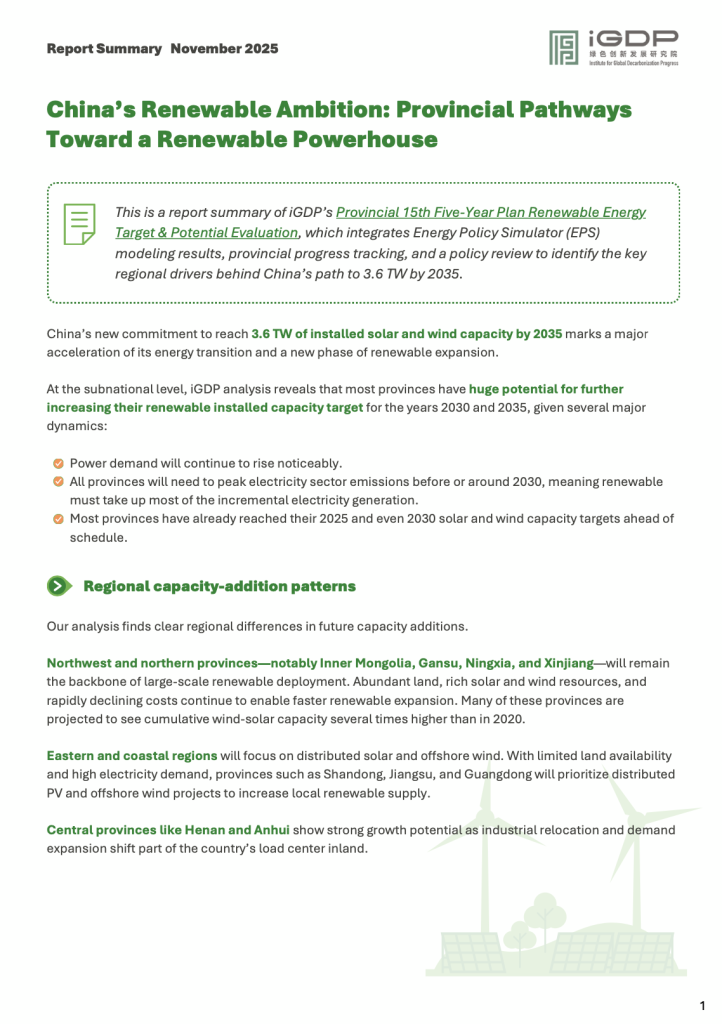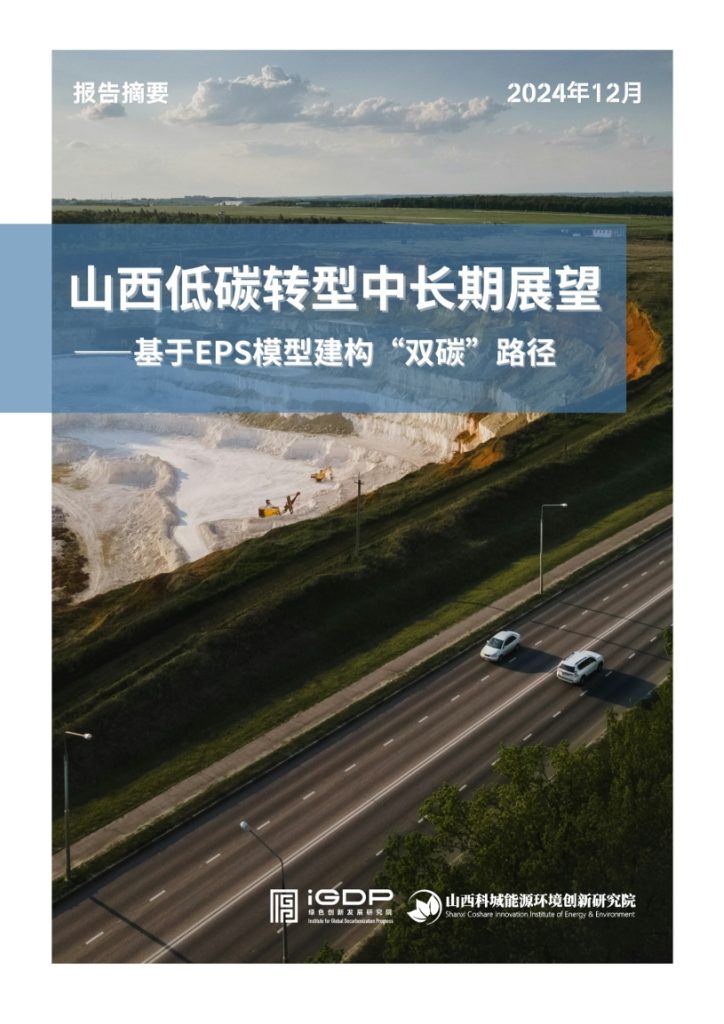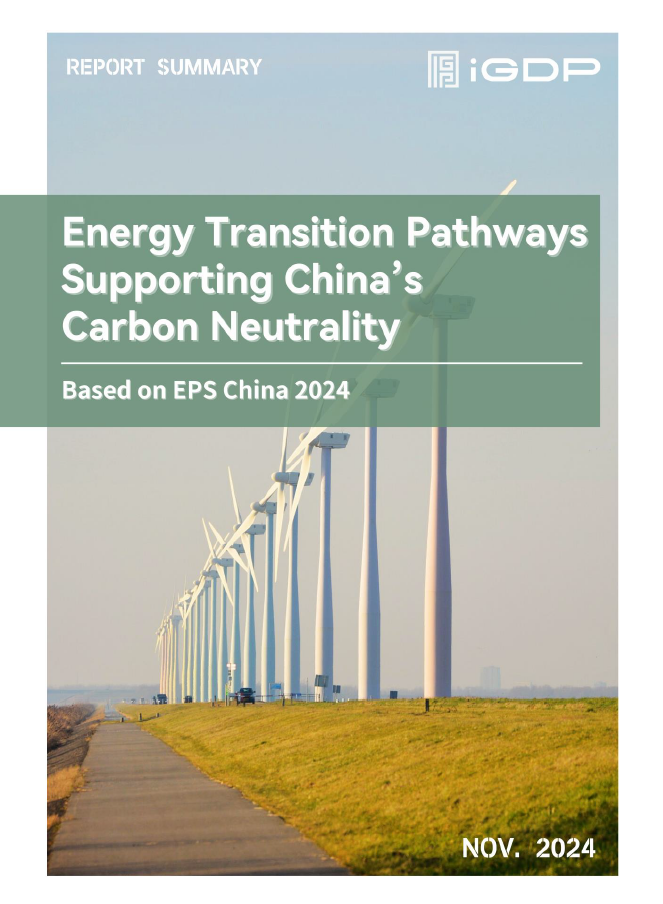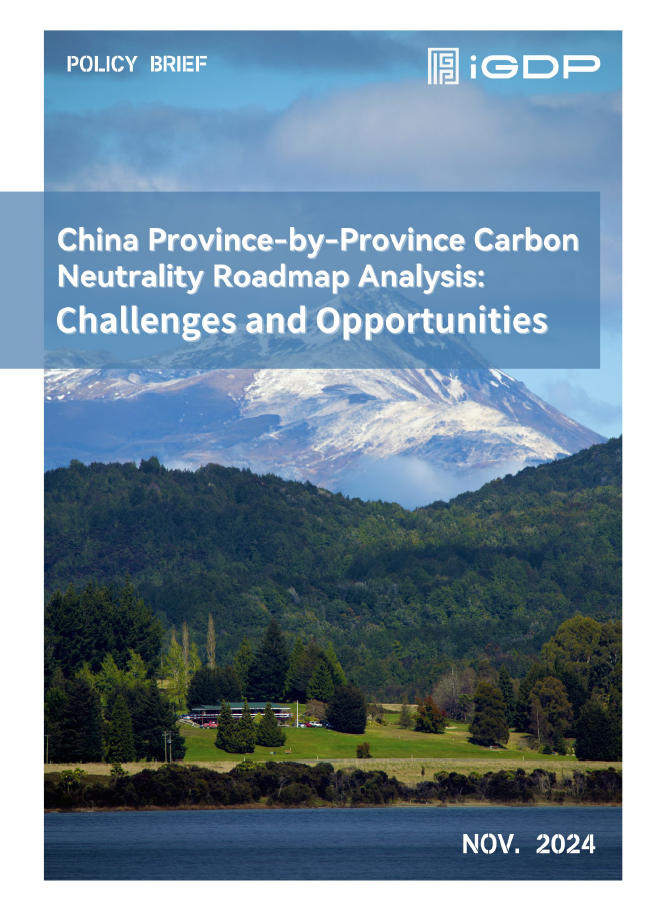Energy Transition
Decarbonizing energy systems is pivotal for achieving sustainable development and carbon neutrality, requiring holistic transitions across the power, industry, building, and transport sectors. China and other emerging economies face a dual challenge: building modern energy systems that ensure access, equity, and economic growth, while also delivering a secure, efficient, and low-carbon energy transition. iGDP is committed to accelerating the transition to a zero-carbon energy system without compromising sustainable economic development or social equity.

Our Actions:
- Energy System Analysis: Utilizing quantitative modeling tools, we conduct research on carbon neutrality pathways at national and regional levels. Our work identifies key regions, critical sectors, and priority policies, as well as the investment requirements and the broader macroeconomic impacts—such as effects on GDP and employment—associated with these pathways.
- Regional Green & Low-Carbon Transition: Using the Low-Carbon & Green Index for Cities (LOGIC), we quantitatively track the impact of green policies across the economy and key sectors, compare regional progress, and identify optimal policy pathways.
- Industrial Electrification & Zero-Carbon Transition: We promote industrial process heat decarbonization and electrification by providing research support—through policy analysis, technology analysis, and case studies—for zero-carbon roadmaps in key industries.
- Power System Decarbonization & Coal Power Transition: We monitor renewable energy deployment and coal power transition globally and in China. Using modeling and scenario analysis, we study regional renewable energy targets and roadmaps, and develop solutions for the low-carbon transition of coal-fired power.
- Exploring Emerging Solutions: We explore integrated solutions such as zero-carbon industrial parks/communities, virtual power plants, vehicle-grid integration, green cooling, and zero-carbon villages.
Publications
2025-11
Report Summary
This report summary highlights China’s accelerated pathway to becoming a renewable powerhouse, with a national target of 3.6 TW of installed solar and wind capacity by 2035. It emphasizes that this transition is being driven at the provincial level, where most regions have already exceeded their 2025 and even 2030 targets ahead of schedule. The analysis reveals distinct regional roles: northwestern provinces like Inner Mongolia will lead large-scale supply additions, while eastern and coastal provinces such as Guangdong and Jiangsu are driving demand growth and focusing on distributed solar and offshore wind. To sustain this rapid expansion, the report identifies critical needs, including raising provincial targets, enhancing grid flexibility and storage, accelerating power market reforms, and expanding cross-regional transmission to ensure efficient integration and consumption of renewable energy.
2024-12
Report Summary
Shanxi is an economically underdeveloped, coal-dependent region in China, and its transition to low-carbon energy is bound to face unique complexities and challenges. To break free from the “coal trap,” Shanxi must develop a long-term low-carbon development strategy, stabilize market expectations, boost public confidence, and drive both energy transformation and low-carbon socio-economic development.
To model Shanxi’s low-carbon transition path under the “dual-carbon” goals, iGDP and the Shanxi Coshare Energy and Environment Innovation Institute (Coshare) have jointly developed the Shanxi Energy Policy Simulation Tool (Shanxi EPS). Through modeling and scenario analysis, the tool quantitatively simulates Shanxi’s energy transition and emissions reduction pathways. It identifies key emissions reduction areas and policies to focus on at different stages, estimates potential investment needs, and assesses the impacts of Shanxi’s low-carbon transition on GDP and employment. The results will provide critical research support for the development of a medium- to long-term low-carbon transition strategy for Shanxi.
2024-11
Report Summary
Achieving China’s Dual Carbon target is both a long-term strategic goal and a vital commitment to global climate action, requiring profound economic and social transformation. The iGDP modeling team, through extensive research and collaboration with experts, developed the Energy Policy Simulator (EPS China 2024) to analyze energy consumption and greenhouse gas emission trends from 2020 to 2060.
2024-11
Policy Brief
While China’s provinces differ in economy, resources, and policy implementation, they share the common goal of achieving carbon neutrality. The iGDP modeling team developed EPS provincial models using subnational open-access data and policies, evaluated the current “1+N” policies, and identified key regions and critical policy measures. This briefing highlights gaps in climate efforts across provinces and sectors, aiming to guide the development of subnational roadmaps for carbon neutrality.




